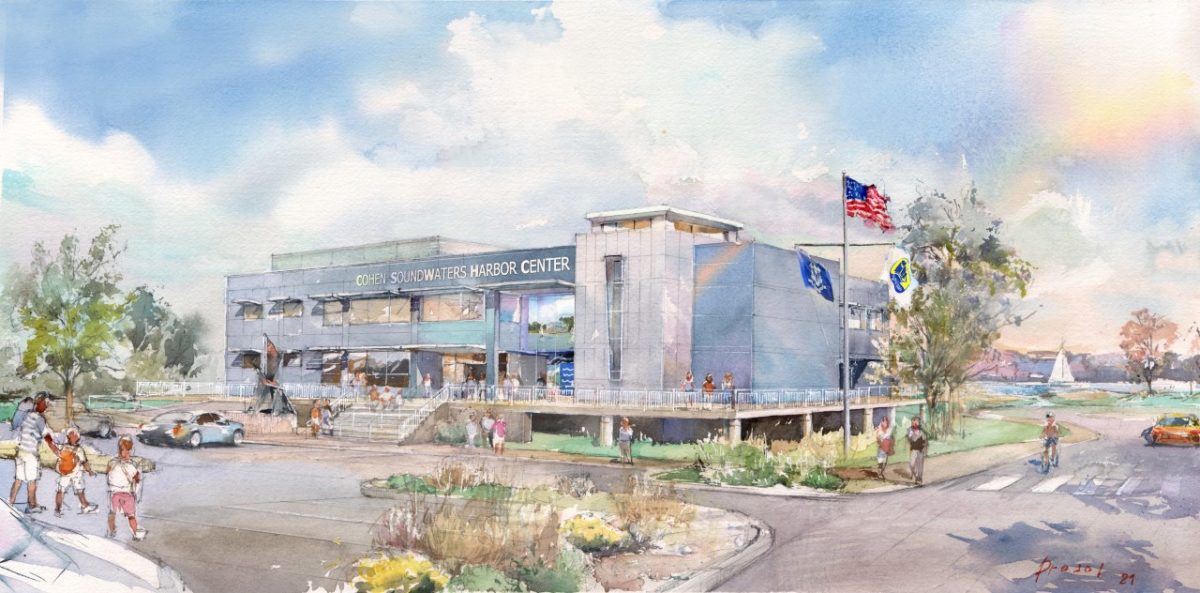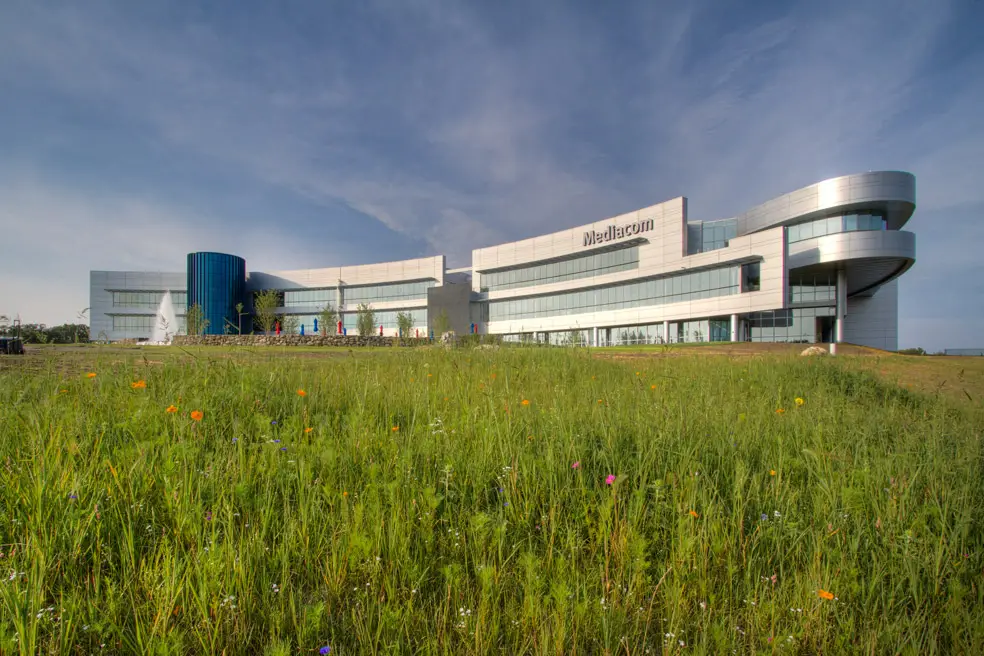Momentum, Belgian soccer player Simon Mignolet once said, is an amazing thing when it”™s working in your favor ”” an opinion that the leadership at SoundWaters in Stamford certainly shares.
While the Harbor Point development has made plenty of headlines in recent years, SoundWaters ”” the 501(c)(3) nonprofit about 2½ miles away ”” is in the midst of making news as well.
“Once this building and this park are open, Stamford Harbor is going to become a destination,” SoundWaters President Leigh Shemitz told the Business Journal during a recent visit.

The building in question is the 12,000-square-foot Cohen SoundWaters Harbor Center, whose official groundbreaking will likely take place in early June; it is expected to open in mid-2022.
Construction on the 12,100-square-foot building, which also includes beach restoration and public access to the water, is underway and is slated to be completed in mid-2022.
Recently the nonprofit, which is dedicated to creating broad access to the Long Island Sound, announced the receipt of a $3 million leadership gift from the Steven & Alexandra Cohen Foundation to support construction of the center. All told, it will cost about $8 million, with roughly 90% coming from grants and private donors.
And, in keeping with the organization”™s mission, its construction and operation will be as economically responsible as possible, Shemitz noted.
The project is what she called the linchpin of the city”™s revitalization of the surrounding Boccuzzi Park. While itself a destination for families, joggers and dogwalkers ”” and, yes, soccer players ”” Boccuzzi has long been in need of repair. When it isn”™t flooding from the nearby waters, the sole parking lot can be an after-hours magnet for teens with nothing better to do, she said.
Among other concerns are a deteriorating seawall, lack of sufficient public restrooms and the need to dredge the dock area.
Public access to the sound itself has also been limited, something that SoundWaters and the city are working together to improve.
Stamford spent $86,000 in studying plans for the area, culminating in the creation of a Boccuzzi Park Master Plan by Stantec Consulting in 2018.
As part of the master plan, SoundWaters received a $348,000 grant from the National Fish & Wildlife Foundation to rebuild the dunes at the water”™s edge once the city relocates the parking lot.
At the time of the Cohen announcement, Mayor David Martin said the new Harbor Center “allows SoundWaters to expand this role and anchors the city”™s revitalization of Boccuzzi Park, while increasing resources for education, maritime job training and recreational access to the Long Island Sound.”
And education is very much a cornerstone of the nonprofit”™s mission. Vice President of Development Bob Mazzone noted that SoundWaters began in 1990 when Len Miller, learning of the poor condition of the Long Island Sound, formed a group to buy a replica of an 80-foot, 18th century schooner. It was fitted with education stations, rechristened “SoundWaters” and is a popular attraction for students ”” some 6,000 annually ”” and families who can enjoy afternoon and sunset sails.
Miller ”” who founded and chairs the board of the Discovering Amistad project ”” remains in touch; “I just talked with him the other day,” Shemitz said.
In 2000, then-Stamford Mayor Dannel Malloy brokered a partnership that allowed the nonprofit to renovate the historic Holly House into office and additional education space; roughly 30,000 students make the trip there each year.
Until Covid hit ”” or so one might think.
Surviving Covid
“We have a whole team of educators,” Mazzone said, “and they immediately set to work, because teachers need content. We ended up producing over 90 lessons which were uploaded and made available free of charge.”
“We were also able to do virtual field trips,” Shemitz said, “which drew people from as far away as Egypt.”
“Teachers Google ”˜virtual field trips”™ and we come up,” Mazzone said.
SoundWaters also has three core educational programs for youth: Young Mariners, a local sailing and youth development group that it acquired through a merger in 2016 and draws about 100 students each year; Harbor Corps, which provides maritime job skills training for young adults; and Research Intensive, featuring college-level marine research opportunities for high school students.
Shemitz said bottled-up demand combined with increasing vaccinations has seen all of its warm-weather programs quickly filling up. “The cicadas have nothing on us when it comes to seeing these kids emerge,” she said. “It”™s been joyous.”
Shemitz credited the organization”™s board and its array of donors for stepping up during the pandemic”™s darkest days.
Other fundraising events include the annual SoundWaters Flotilla. Patterned after charity walkathons and scheduled for July 10, that event has featured up to 200 people of all ages kayaking or paddle-boating through the sound; it typically raises about $20,000 each year.
Even more popular is the annual HarborFest. Set for Aug. 28, it includes harbor tours, mini-golf and other activities ”” crowned by the self-explanatory Cardboard Kayak Race. Martin has participated in the past; in fact, the winner is presented with a Mayor”™s Trophy.
“Probably 97% of the entries end up sinking,” Mazzone said. “It draws thousands of people and it”™s absolutely hilarious.”
That both events expose the uninitiated to SoundWaters and the harbor is the icing on the cake, Shemitz said.
“There is still so much potential here, which the Harbor Center will help us realize,” she said. “That makes our future even more exciting.”




















